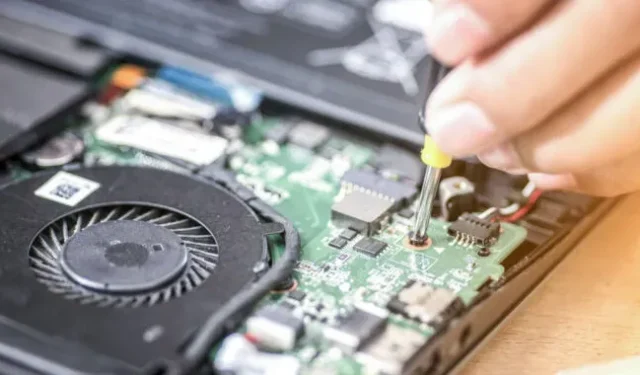The fight for repair rights won a major victory today as New York State passed a law requiring digital electronics manufacturers, such as laptop and smartphone OEMs, to provide diagnostic and repair information to consumers and independent repair shops.
The bill passed in the New York Senate (49 to 14) on Wednesday and in the Assembly (145 to 1) today would enact the Digital Device Fair Repair Act. Gov. Kathy Hochul has to sign the bill before it becomes law, but supporters like iFixit said they don’t expect obstacles.
It is noteworthy that the bill does not cover medical devices, household appliances, agricultural and off-road equipment, as well as communications equipment for ensuring public safety. However, supporters of the struggle for the right to repair are also looking at these areas. The bill also does not apply to cars.
Companies selling covered tech products in New York will be required to distribute information, software, tools, and parts so that individuals and independent repair shops can repair personal devices themselves. iFixit said it expects this to be in place by 2023.
In particular, the bill states:
“Requires OEMs to provide, for diagnostic, maintenance or repair purposes, to any independent repair service provider or owner of digital electronic equipment manufactured by or on behalf of the OEM or sold by the OEM, on fair and reasonable terms, documentation, parts and tools, including any information updates. Nothing in this section requires the OEM to provide a part if that part is no longer available to the OEM. For equipment that contains an electronic security lock or other security feature, the OEM must provide the owner and third party repair on fair and reasonable terms any special documentation, tools and parts,
The fight against “monopolistic practices”
The bill successfully argued that it would help protect against “digital electronics manufacturers’ monopoly practices”caused by withholding repair and diagnostic information. This has forced consumers to rely on product manufacturers and their authorized repair providers. According to a blog post today by iFixit CEO Kyle Vince, 59 percent of independent repair shops in California have recently reported fear of closure without the right to repair.
“Nothing prevents third-party repairers from being technically competent to perform digital repairs, other than the lack of information that manufacturers withhold,” the bill says. “In too many cases, the manufacturer deliberately limits the repair of digital devices.”
The bill also cites “inflated, high repair costs, poor or no service in rural areas, and unnecessarily high turnover of electronic products”as justification for the legislation.
E-waste has also been the cause of the bill, as well as the general fight for the right to repair. New York Assemblywoman Patricia Fahy said in a statement that the bill “will help reduce the 655,000 tons of toxic e-waste generated [and] routinely discarded in one calendar year here in New York State.”
In a statement, the New York State Assembly pointed to a study by the U.S. Public Interest Group that found the average New York household would save an estimated $330 a year and cut e-waste by 22 percent with repair rights.
Outside Empire State
While right-to-repair advocates have won a notable victory today, much more legislation is needed before the right is extended to the entire country and product categories.
In a blog post today, iFixit’s Vince pointed out the anticipated global impact of the legislation. First, the chief executive hopes manufacturers will make repair manuals available to everyone, not just New Yorkers.
Vince also expressed his hope that software protections will spread outside of New York.
“New York State law includes provisions to reset software locks, which some manufacturers use to bind parts to a motherboard or device serial number. repair, but it also helps the remanufacturing industry: many repairers are removing parts from old devices, which is not possible when those devices have parts that are mated to the motherboard,” Vince said, noting the infrastructure-related problems that suppliers face.
Ars recently spoke with Vince, who discussed the biggest challenges and developments in the fight for the right to repair right now, including the need for the federal government to get involved. You can check out our repair eligibility interview with the CEO of iFixit here.


